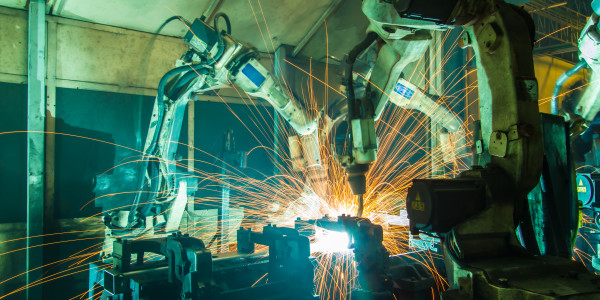Manufacturing is an important part of the U.S. economy. The National Association of Manufacturers states that every dollar spent in manufacturing returns another $1.82 to the economy — the highest multiplier of any economic sector. Here’s a look at the most recent manufacturing numbers, according to 2018 data from the United States Census Bureau.
Manufacturing employment
There’s a lot of talk about automation replacing human workers in manufacturing, as well as a growing skills gap (the lack of trained workers to fill higher skill positions). Still, manufacturing is the fifth largest employer in the United States. The manufacturing sector employs 11.6 million Americans.
In 2016, nearly 30% of manufacturing employees over the age of 25 had at least a bachelor’s degree.
Manufacturing workers earn more than the national average. The total annual payroll for the manufacturing sector was $663.7 billion; average annual payroll for manufacturing came out to $57,266. The average annual payroll for all sectors was $50,769.
Manufacturing employment makes up 4.31% of the total working-age population in the United States. People work in manufacturing in every U.S. state, but the highest concentration of manufacturing employment is in the Midwestern and Southeastern states.
Manufacturing workers make up more than 7.50% of the working age population in Wisconsin, Iowa, and Indiana.
A closer look at manufacturing
The total value of manufacturing shipments in 2016 was $5.4 trillion, and manufacturing accounts for nearly 60% of all U.S. export dollars. However, some manufacturing subsectors contribute more than others.
Top five manufacturing subsectors for employment:
- Transportation equipment with 1.48 million employees
- Food with 1.42 employees
- Fabricated metal products with 1.33 employees
- Machinery with 0.99 employees
- Computer and electronic products with 0.77 employees
Top five largest value manufacturing subsectors:
- Transportation equipment with $949.3 billion
- Food with $764.8 billion
- Chemical with $723.3 billion
- Petroleum and coal products with $430.3 billion
- Machinery with $348.4 billion
The certainty of manufacturing
There’s a lot that remains to be seen with the manufacturing sector. Will automation eliminate the need for human workers? Will the increased use of machines and automated systems create new opportunities for human workers? How important will manufacturing be for the U.S. economy in the future?
We can’t answer these questions, but we do know that manufacturing will always have a part to play in the U.S. economy, and machines are necessary for modern manufacturing. Make sure that your industrial motion control system is ready for the future.
Call 479-422-0390 for Indramat service, support, and troubleshooting.



